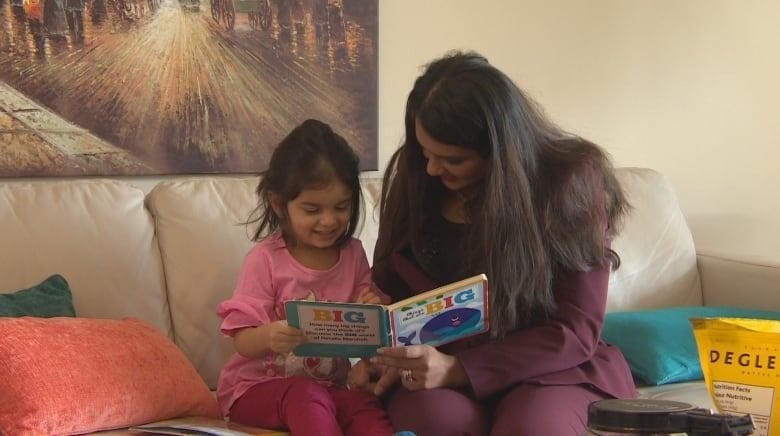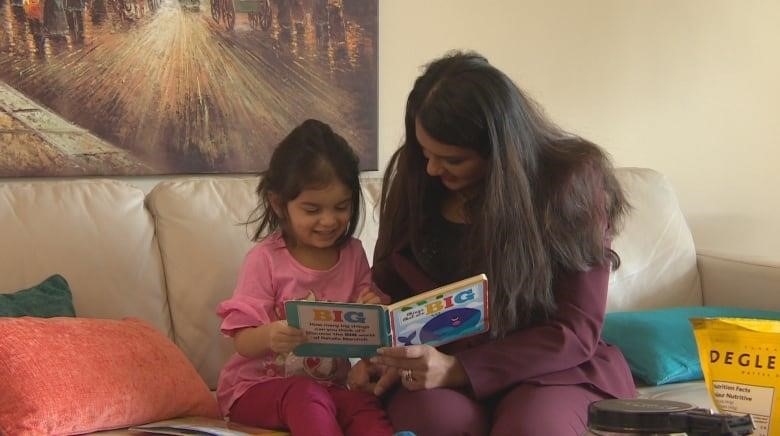
Dina Lobo has had her first child, changed careers, and started her own business since the COVID-19 pandemic started three years ago.
But first, the woman from Regina says, she was at her worst.
“In my last job, I worked directly with customers. I always had a lot of worry, even though I was seven months pregnant “Lobo said.
After she had her daughter on Mother’s Day 2020, her husband kept working full time while Lobo took online classes to become a trauma support specialist and women’s transformational coach.
Her business, Transformational Spark Coaching, started up in 2021. It gives her the freedom to choose where and when she works and gives her the satisfaction of helping other people. “For me, it’s a small community of women coming together to make a difference in people’s lives, and that’s important,” Lobo said. “Saskatchewan has given me a place to grow. There are endless opportunities here.”
‘Women are coming back
The provincial government says that in 2022, women’s employment, full-time employment, and participation in the labor force all hit all-time highs in Saskatchewan.
In February 2023, the seasonally adjusted unemployment rate in Saskatchewan was 3.8 per cent, the lowest among the provinces and well below the national average of 4.9 per cent.
The government told CBC News, “A healthy economy is only possible if it gives everyone a chance.”
Statistics Canada says that the number of full-time jobs for women in Saskatchewan grew by almost 5% from 2019 before the pandemic to 2022. Statistics Canada says that a person works full-time if they usually work 30 or more hours a week at their main or only job.
In Saskatchewan, about 196,000 women ages 15 and up had full-time jobs in 2019, and that number is expected to rise to 204,200 in 2022.
At the same time, the number of women working part-time dropped from 69,600 to 67,900, which is a 2.4% drop.
The data from the labour force survey showed that the number of women working in the province went up by 11,300 between November 2021 and November 2022. Erica Carleton, an associate professor in business leadership at the University of Regina, said, “We know that during COVID, women quit their jobs at a much higher rate than men, especially because they had to take care of their children.””I’m glad to see women making a comeback. We are less worried about COVID now. We’re more ready to go back to work now.”
Carleton is also an RBC Women in Leadership research scholar at the University of Regina. She is currently looking into how women can get and keep leadership positions.
She said that it will be important to keep an eye on how the pandemic affects women’s career growth, which also affects their pay potential.
She said, “You’re kind of starting over, and if you’re a woman, the job you left might not be the job you go back to.” “Only time will tell how much of an effect this type of women leaving the workforce has on their careers as a whole.”
Job quality in questio
Lori Johb, president of the Saskatchewan Federation of Labour (SFL), agreed that even though more women are working, this doesn’t always mean that the jobs are better or that they pay more.
“A lot of women still work part-time jobs, and maybe they have more than one,” Johb said, adding that women are still over-represented in lower-paying jobs.
“The minimum wage needs to go up. People need money to live on. I really and truly believe that we don’t have a shortage of workers. Instead, we have a shortage of money.”
The minimum wage in Saskatchewan is $13 an hour, which is the lowest in Canada. On Oct. 1, 2023, it will go up to $14.00, and on Oct. 1, 2024, it will go up to $15.00.
If people were paid well for going to work, so many things would get better in our economies everywhere.– Lori Johb, Saskatchewan Federation of Labor
But Johb said that these increases just mean that women in Manitoba will keep falling behind the rest of the country.
She said, “You just can’t afford to live with your family and keep your promises, pay your bills, and do things like that.”
The province said that from February 2020 to February 2023, the number of women in Saskatchewan who worked more than one job dropped by almost 12%.
The government also said that Saskatchewan women are making more money. In Saskatchewan, the average hourly wage for women was $28.39 in 2022, up from $27.58 in 2021.
Johb noted there are still instances in the province of people not being able to afford to work. She gave the example of someone working a lower to minimum-wage job and not being able to cover the cost of elder or child care, and transport. “This affects women in a much harsher way, whether it’s low wages or access to paid sick time, access to things like public transportation,” she said. “If people were paid well for going to work, so many things would get better in our economies everywhere.” 
Carla Beck, the leader of the opposition, told CBC News in January that she is “deeply worried” about the quality of jobs in Saskatchewan as a whole. “Many people in the province tell me that they often have to work two or even three jobs just to get by,” she said. “Jobs in this province should pay the bills, give people stability, and make them feel like they’re making a difference. They should also encourage people to stay.”
Province is optimistic about job growth in 202
Statistics on the province’s labor force show that there are 0.8% more people working in 2022 (581,500) than there were in 2019 before the pandemic (576,900). Even though the numbers were high, Saskatchewan was still at the bottom of the list for job growth in Canada last year.
In its growth plan, the government of Saskatchewan wants to create 100,000 more jobs and bring the population to 1.4 million by 2030.
Johb said that the SFL has been asking the province to make a job strategy for “a very long time.”
She said that the provincial government would have to talk to workers from different industries to create more stable, well-paying jobs. This way, workers “wouldn’t have to worry about getting another job or stopping at a food bank on the way home to feed their family,” she said. The province said that the Ministry of Immigration and Career Training has programs and services to help all job-seekers improve their skills and match them with the needs of Saskatchewan employers. The ministry also gives money to organizations across the province that have projects to help women in the workforce. Some of the organizations that the ministry helps are International Women of Saskatoon, Regina Immigrant Women Centre, Women’s Resource Centre of Regina, and Women’s Resource Centre of Regina.
